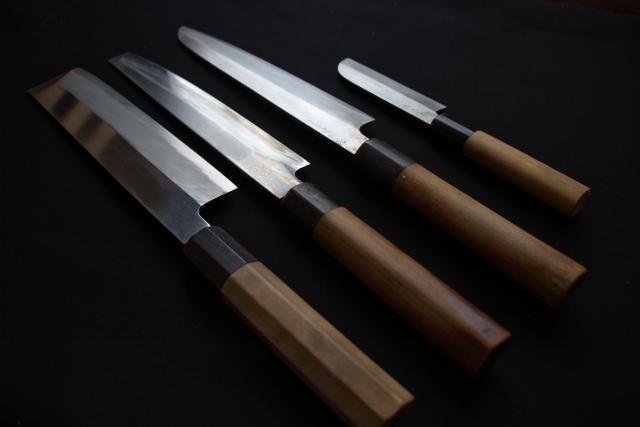
All You Need to Know About Japanese Knives or the ‘Wa-Bochos’
Known for the extreme delicacy and intricate processes required to craft Japanese food, professionals and culinary experts from all over the world all agree upon the challenges they have to face during the long trainings in order to successfully become a Japanese food expert or a sushi master.
Japanese food, particularly Sushi, Sashimi, and Nigiri dishes, can never be well-crafted without the sharp-edged blades that are designed to slice the finest of quality grained Tuna meat and the muscular, strong Salmon fish. If you are one who is passionate and curious enough to learn the techniques in crafting the authentic, Japanese-style cuisine all by yourself at home, the right equipment is required. Just like a swordsman who needs his companion, a chef’s blade will get him through with all the processes of cooking the best food.
A housewife, a bachelor, or even a high-school teen may want to try out the sushi-making hobby once in a while. As sushi and sashimi both seem like an easy menu to make, many disregard the equipment required. However, that is just a wrong move. Starting off with the selection of a good Japanese knife will indeed, be an excellent start before kicking into the ingredient s selection process and how to season or add flavors to the mix.
The ancient, traditional Japanese knives are also known as ‘Wa-Bochos’ which could be dated back to the era where the Japanese Samurais first appeared. Similar methods to make Samurai blades were actually applied to make the first versions of the Wa-Bochos and even the Japanese-style kitchens we have today. Plus, in the Japanese traditions when it comes to the world of culinary arts, a chef’s mastery is highly focused on the knife-work, the arts in slicing, chopping, and cutting the pieces of finest ingredients to craft delicious, rich-flavored Japanese dishes. As we go through the different kinds of Japanese knives, we will get to see that there are a variety of materials that were used to craft and form them. As they would have to be extremely sharpened to allow extremely thin and slim slicing motions, the best materials and forging methods are required to pull out the knives’ full potential as a chef’s greatest weapon.
As earlier mentioned, only a good cutlery combined with talent and practice will result in the finest dishes which portray and reflect the souls of the chefs. And to achieve this mastery, we will be looking at the kinds of Japanese knives as a guide through all the essential information we need to know before deciding on buying one.
The Kataba or the Fluted Blade
The Kataba or also known as the beveled or fluted blade has distinctive features which made it different from the Western-style knives commonly used today for the cutting of vegetables, meats, and fruits. The Kataba knife is different from the ordinary knives we know as its outer blade is very well sharpened with a fluted edge, while the inner blade remains somewhat flat. The knife’s surface is also a little curved or concave is shape, marking a few similarities to knives equipped with emptied edges. The reason why most professional Japanese chefs prefer the Kataba is mainly due to its excellent capability to create clean-cut slices and enable them to separate or detach the meat easily when they are stuck to either side of the blade. As Japanese food often features raw ingredients like fish, squid, or jellyfish, the beauty of these dishes is a number-one factor that won the hearts of diners. Therefore, not only does a knife has to perform the tasks well, but it also has to be sharp enough to make clean-cut slices for the aesthetic required in the dining of Sashimi, as a rough-edged piece of Salmon would not make a very good impression.
There are the two main types of Wa-Bocho knives: Kasumi and Honyaki. The Kasumi knife comes with a combination of two-blade layers which were technically forged together to create one merged blade. The Kasumi knife is made out of both iron and carbon steel, where the spine which stretches to the end of the blade is made out of iron and the backside of the blade is made up of carbon steel. This typical knife is made to simply allow users to achieve easier cuts and is also recommended for beginners and intermediate users. The Honyaki knife is mostly made out of carbon. This high carbon-containing blade is repeatedly hammered to create a blade shape and also to enable the carbon molecules to spread thoroughly through the entire blade. This special technique aids in the removal of all impurities to form a true, pure steel blade. This knife is a little fragile compared to the Kasumi knife but it is widely used among professional chefs and those who are masters in the crafting of delicate Japanese cuisine.
